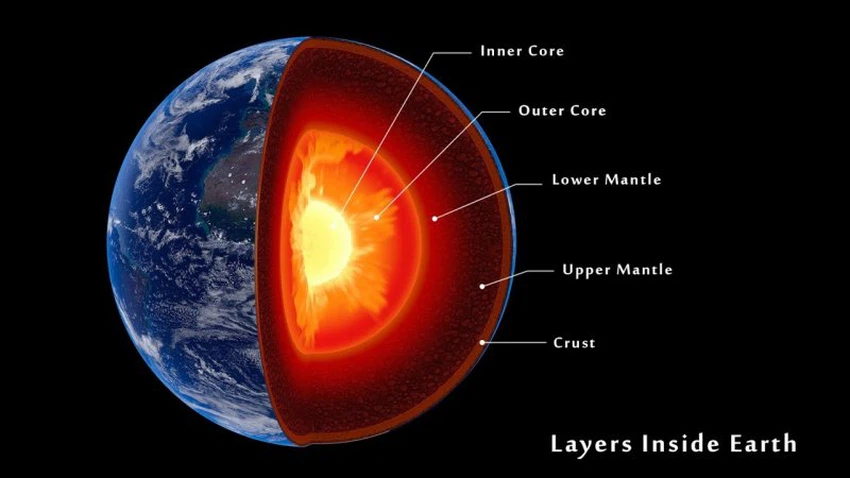The discovery of a mysterious new structure inside the core of the Earth
Arabia's weather - the earth may contain more layers than scientists thought, new research has found that there may be a hidden layer inside the solid inner core of the earth (the core of the earth), the exact nature of this layer is still mysterious, but it could have a relationship to the changes that may occur In the structure of iron under extreme temperatures and pressures, there is more complexity in the composition of the inner core than previously expected.
Earth's complex core
The core of the earth consists of two parts, which are:
-
Outer Core : The liquid outer core begins at a depth of about 2,897 kilometers from the Earth's surface, and consists of liquid minerals at temperatures ranging from 2,204 to 4,982 degrees Celsius.
- Inner Core : It starts about 5,150 km below the earth's surface and is composed of solid iron and a little nickel.

The first indications that there may be something strange lurking inside the inner core of the Earth date back to the 1980s, but because there is no way to reach the inner core, and because the temperatures there are close to those on the surface of the sun , scientists use earthquake waves to make pictures. For the kernel.
As seismic waves are studied on the side in which they originated and compared with waves that reach the other side of the Earth, as seismic waves that pass to the other side of the Earth carry slight changes that scientists can use to recreate a picture of the ground structures that these waves passed through.
Strangely, when waves pass through the core from north to south, they travel faster than waves that pass through the core parallel to Earth's equator . Nobody knows why this is for sure, but the technical explanation for this strange difference is anisotropy.
The mystery lies deep in the earth
In the early 2000s, scientists noticed that there was a variation in the properties in a region within the inner core that did not match the composition of the inner core layer.
Scientists collected a data set of about 100,000 seismic waves that passed through this level of the Earth's core, and applied an algorithm looking for the best analysis of the data and the best physical interpretation of what is happening, and found that inside the inner core, a layer starts from a distance of 650 km from the center of the Earth, and that Anisotropy is not exactly parallel to the equator, but rather tilted by 54 degrees.
It's not easy to determine what this thing is, but researchers are now working with metallurgical physicists and geodynamic scientists to try to create models of the nucleus inside Earth's inner core that would explain the change.
Scientists believe that when the planet cooled, the inner core cooled and expanded, so the core structure inside the Earth's inner core could have a relationship to the way iron crystallizes as it cools , or it could be due to changes in the way the metal behaves at high temperatures and pressure.
Adding to the difficulty is that imaging the Earth's core is complex, in part because deep earthquakes that scientists use for imaging do not occur evenly around the world , and this choppy data set creates blind spots.
Seismologists and geophysicists are now working on ways to devise subtle types of earthquake waves called peculiar phases that have passed through the Earth's inner core.These phases are usually too subtle to be extracted from a single earthquake, but they can be detected in a large data set of thousands of earthquakes.
Scientists hope to get more details about this layer and the Earth’s core, as the importance of studying the Earth’s core stems from its role in the formation of the Earth’s magnetic field , and the magnetic field, in turn, protects the planet from charged particles flowing from the sun, and if it were not for this magnetic field and its role in protecting the Earth, it would not be. Life evolved on this planet.
Arabia Weather App
Download the app to receive weather notifications and more..



